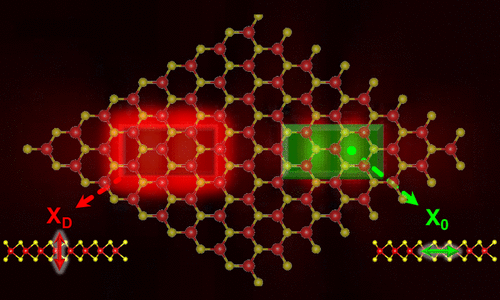当前位置:
X-MOL 学术
›
ACS Photonics
›
论文详情
Our official English website, www.x-mol.net, welcomes your
feedback! (Note: you will need to create a separate account there.)
Unveiling the Optical Emission Channels of Monolayer Semiconductors Coupled to Silicon Nanoantennas
ACS Photonics ( IF 6.5 ) Pub Date : 2020-09-23 , DOI: 10.1021/acsphotonics.0c01175 Jean-Marie Poumirol 1 , Ioannis Paradisanos 2 , Shivangi Shree 2 , Gonzague Agez 1 , Xavier Marie 2 , Cédric Robert 2 , Nicolas Mallet 3 , Peter R. Wiecha 3 , Guilhem Larrieu 3, 4 , Vincent Larrey 5 , Frank Fournel 5 , Kenji Watanabe 6 , Takashi Taniguchi 7 , Aurélien Cuche 1 , Vincent Paillard 1 , Bernhard Urbaszek 2
ACS Photonics ( IF 6.5 ) Pub Date : 2020-09-23 , DOI: 10.1021/acsphotonics.0c01175 Jean-Marie Poumirol 1 , Ioannis Paradisanos 2 , Shivangi Shree 2 , Gonzague Agez 1 , Xavier Marie 2 , Cédric Robert 2 , Nicolas Mallet 3 , Peter R. Wiecha 3 , Guilhem Larrieu 3, 4 , Vincent Larrey 5 , Frank Fournel 5 , Kenji Watanabe 6 , Takashi Taniguchi 7 , Aurélien Cuche 1 , Vincent Paillard 1 , Bernhard Urbaszek 2
Affiliation

|
Monolayers (MLs) of transition metal dichalcogenides (TMDs) such as WSe2 and MoSe2 can be placed by dry stamping directly on broadband dielectric resonators, which have the ability to enhance the spontaneous emission rate and brightness of solid-state emitters at room temperature. We show strongly enhanced emission and directivity modifications in room-temperature photoluminescence mapping experiments. By varying TMD material (WSe2 vs MoSe2) transferred on silicon nanoresonators with various designs (planarized vs nonplanarized), we experimentally separate the different physical mechanisms that govern the global light emission enhancement. For WSe2 and MoSe2, we address the effects of Mie resonances and strain in the monolayer. For WSe2, an important additional contribution comes from out-of-plane exciton dipoles. This paves the way for more targeted designs of TMD-Si nanoresonator structures for room-temperature applications.
中文翻译:

揭示与硅纳米天线耦合的单层半导体的光发射通道
可以通过干法冲压直接在宽带介电谐振器上放置过渡金属二硫化碳(TMD)(如WSe 2和MoSe 2)的单层(MLs),其能够增强室温下固态发射器的自发发射速率和亮度。我们在室温光致发光映射实验中显示出增强的发射和方向性修饰。通过以各种设计(平面化与非平面化)改变在硅纳米谐振器上转移的TMD材料(WSe 2与MoSe 2),我们通过实验分离了控制总体发光增强的不同物理机制。对于WSe 2和MoSe 2,我们解决了单层Mie共振和应变的影响。对于WSe 2,平面外激子偶极子是一个重要的附加贡献。这为针对室温应用的TMD-Si纳米谐振器结构的更有针对性的设计铺平了道路。
更新日期:2020-11-18
中文翻译:

揭示与硅纳米天线耦合的单层半导体的光发射通道
可以通过干法冲压直接在宽带介电谐振器上放置过渡金属二硫化碳(TMD)(如WSe 2和MoSe 2)的单层(MLs),其能够增强室温下固态发射器的自发发射速率和亮度。我们在室温光致发光映射实验中显示出增强的发射和方向性修饰。通过以各种设计(平面化与非平面化)改变在硅纳米谐振器上转移的TMD材料(WSe 2与MoSe 2),我们通过实验分离了控制总体发光增强的不同物理机制。对于WSe 2和MoSe 2,我们解决了单层Mie共振和应变的影响。对于WSe 2,平面外激子偶极子是一个重要的附加贡献。这为针对室温应用的TMD-Si纳米谐振器结构的更有针对性的设计铺平了道路。











































 京公网安备 11010802027423号
京公网安备 11010802027423号